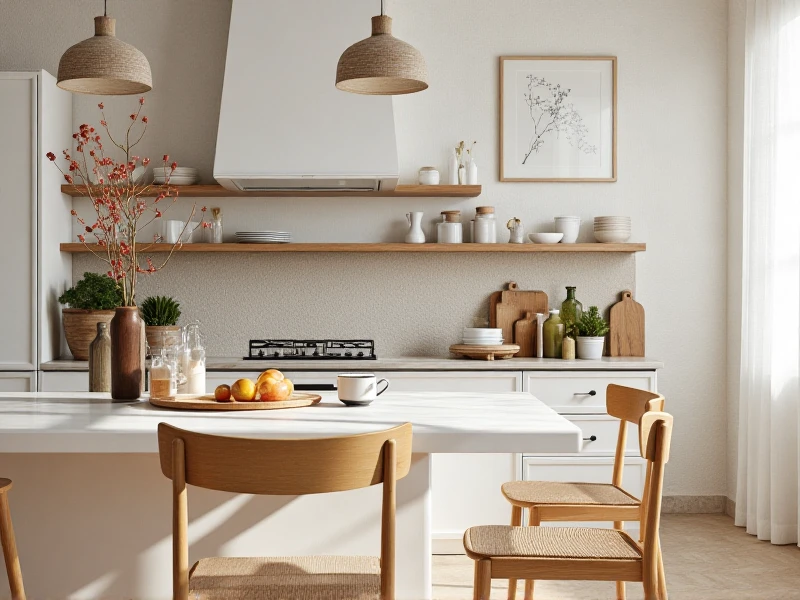The Heart of Your Home: Ultimate Kitchen Design Tips for 2024
2025-06-04

The kitchen transcends its functional role—it’s where morning rituals begin, families reconnect over meals, and unforgettable memories simmer. Smart design transforms this space into an efficient, inviting hub. Let’s explore how to maximize both utility and style, whether you’re renovating or refreshing existing layouts.
Layout That Lives With You
Choosing the right kitchen layout is the cornerstone of functionality. The classic work triangle (connecting sink, stove, and refrigerator) remains invaluable but is evolving. Modern demands like multiple cooks or charging stations now influence flow:
- Galley kitchens shine in compact spaces, utilizing parallel counters for maximum productivity.
- L-shaped layouts excel in open-plan homes, enabling seamless living-dining transitions.
- Island-centric designs dominate renovations, adding prep space and social flexibility (58% of US remodels include islands).
Always prioritize zoning: group appliances by task rather than strict triangulation. Dedicate “clean zones” near dishwashers and “snack hubs” near refrigerators for intuitive movement.
Appliances: Balancing Tech and Practicality
Today’s appliances blend intelligence with elegance:
- Induction Cooktops: Faster heating 25% energy savings and child-safe surfaces.
- Smart Ovens: Verify doneness or preheat remotely via smartphone.
- Energy-Saving Refrigerators: Look for ENERGY STAR® certification to cut costs by $230 yearly.
Pro Tip: Integrate appliances into cabinetry using panel-ready designs for a streamlined aesthetic. Depth matters—counter-depth fridges minimize visual clutter.
Cabinetry & Storage: Beyond Aesthetics
Innovative storage solutions combat clutter:
- Vertical Dividers: Store baking sheets or trays vertically near ovens.
- Pull-Out Spice Racks: Install beside stoves for ergonomic access.
- Toe-Kick Drawers: Utilize wasted under-cabinet inches for trays or linens.
Materials also trend toward durability. Thermofoil cabinets resist moisture in humid environments, whereas quarter-sawn oak withstands heavy use. Matte finishes are rising—60% of designers report fewer visible fingerprints versus glossy alternatives.
Lighting: Layered Illumination Works
Overhead fixtures alone cast shadows on critical task areas. Implement a three-layer approach:
1. Ambient: Recessed ceiling lights provide baseline brightness.
2. Task: Focused pendants or under-cabinet LEDs illuminate countertops.
3. Accent: In-cabinet lighting showcases dishware, while toe-kick glows add nighttime safety.
Dimmer controls allow mood adjustments; warm whites (2700K–3000K) promote cooking focus and evening coziness.
Surfaces & Sustainability
Materials define longevity and eco-footprint:
- Countertops: Quartz outperforms granite in stain resistance; recycled glass tops offer unique earth-friendly flair.
- Backsplashes: Peel-and-stick tiles simplify DIY updates. Recycled glass tiles add sustainable sparkle.
- Flooring: Luxury vinyl planks (LVP) mimic wood withstand spills, while cork offers comfort underfoot and natural sound absorption.
Future-Proofing Your Space
Anticipate evolving needs:
- Outlet Placement: Install USB ports in islands for devices; add outlets inside pantries for hidden appliances.
- Universal Design: Leverage lever-style handles (accessible for all ages) and slide-under sinks for wheelchair users.
- Flex Zones: A butcher-block cart can convert into a breakfast bar or extra workspace.
Conclusion
A kitchen reflecting your rhythm enhances everyday living. Whether embracing smart tech or prioritizing family flow, intentional choices yield a space that works as hard as you do—and welcomes you home. Start with one impactful change: swap harsh lighting for dimmable LEDs or reorganize a single drawer using dividers. Small upgrades accumulate into functional serenity, transforming the humble kitchen into your sanctuary.
Category: